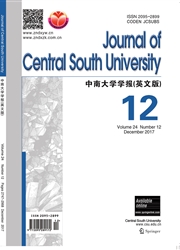

 中文摘要:
中文摘要:
Railway seat inventory control strategies play a crucial role in the growth of profit and train load factor. The railway passenger seat inventory control problem in China was addressed. Chinese passenger railway operation features and seat inventory control practice were analyzed firstly. A dynamic demand forecasting method was introduced to forecast the coming demand in a ticket booking period. By clustering, passengers’ historical ticket bookings were used to forecast the demand to come in a ticket booking period with least squares support vector machine. Three seat inventory control methods: non-nested booking limits, nested booking limits and bid-price control, were modeled under a single-fare class. Different seat inventory control methods were compared with the same demand based on ticket booking data of Train T15 from Beijing West to Guangzhou. The result shows that the dynamic non-nested booking limits control method performs the best, which gives railway operators evidence to adjust the remaining capacity in a ticket booking period.
 英文摘要:
英文摘要:
Railway seat inventory control strategies play a crucial role in the growth of profit and train load factor. The railway passenger seat inventory control problem in China was addressed. Chinese passenger railway operation features and seat inventory control practice were analyzed firstly. A dynamic demand forecasting method was introduced to forecast the coming demand in a ticket booking period. By clustering, passengers' historical ticket bookings were used to forecast the demand to come in a ticket booking period with least squares support vector machine. Three seat inventory control methods: non-nested booking limits, nested booking limits and bid-price control, were modeled under a single-fare class. Different seat inventory control methods were compared with the same demand based on ticket booking data of Train T15 from Beijing West to Guangzhou. The result shows that the dynamic non-nested booking limits control method performs the best, which gives railway operators evidence to adjust the remaining capacity in a ticket booking period.
 同期刊论文项目
同期刊论文项目
 同项目期刊论文
同项目期刊论文
 Measuring Passengers’ Perceived Reliability of Transit Service at the Route Level by Using an Agent-
Measuring Passengers’ Perceived Reliability of Transit Service at the Route Level by Using an Agent- A train dispatching model under a stochastic environment: stable train routing constraints and refor
A train dispatching model under a stochastic environment: stable train routing constraints and refor 期刊信息
期刊信息
